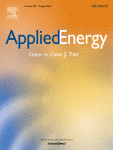 Authors: Eni OKO, Colin RAMSHAW, Meihong WANG
Authors: Eni OKO, Colin RAMSHAW, Meihong WANG
Affiliation: Department of Chemical and Biological Engineering, University of Sheffield, S1 3JD, UK
Reference (APA): Oko, E., Ramshaw, C., & Wang, M. (2018). Study of intercooling for rotating packed bed absorbers in intensified solvent-based CO2 capture process. Applied Energy, 223, 302–316. https://doi.org/10.1016/j.apenergy.2018.04.057
Abstract: “Rotating packed beds (RPBs) are a compact and potentially more cost-effective alternative to packed beds for application in solvent-based carbon capture process. However, with concentrated monoethanolamine (MEA) (up to 70–80 wt%) as the solvent, there is a question as to whether intercooler is needed for the RPB absorbers and how to design and operate them. This study indicates that the liquid phase temperature could rise significantly and this makes it essential for RPB absorber to have intercoolers. This is further assessed using a validated RPB absorber model implemented in gPROMS ModelBuilder® by evaluating the impact of temperature on absorption performance…”
Comments: the authors implemented the model equations if a Rotating Packed Bed in gPROMS Model Builder where they were solved. They applied the model to solvent-based carbon capture process with concentrated monoethanolamine (MEA) (up to 70–80 wt%) as the solvent. As stated by the authors in section 3.1.2, “The vapour-liquid equilibrium, chemical equilibrium and physical properties are described based on the eNRTL property method in Aspen Plus®. The eNRTL property method is accessed from gPROMS ModelBuilder® via the CAPE-OPEN interface.”. The authors regressed parameters of the eNRTL model of Aspen Properties in order to make it better fit with experimental data.
